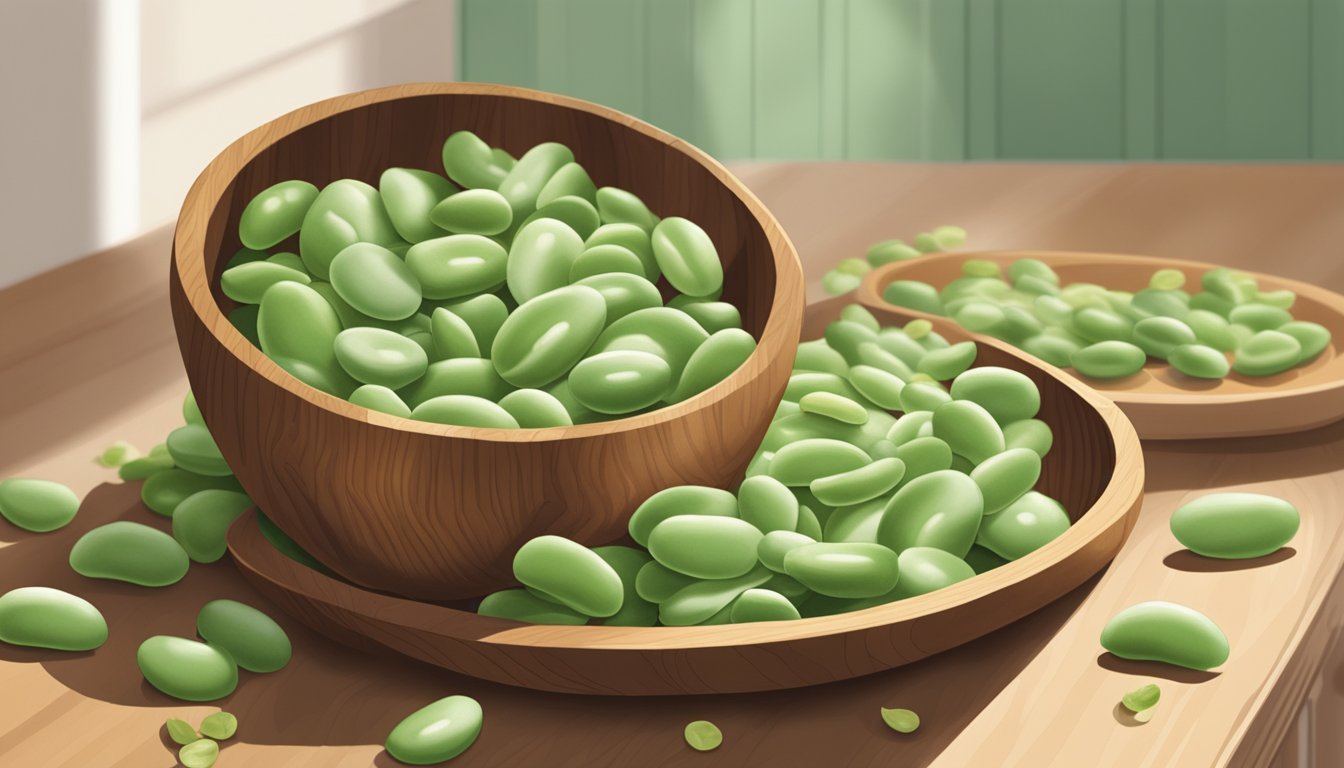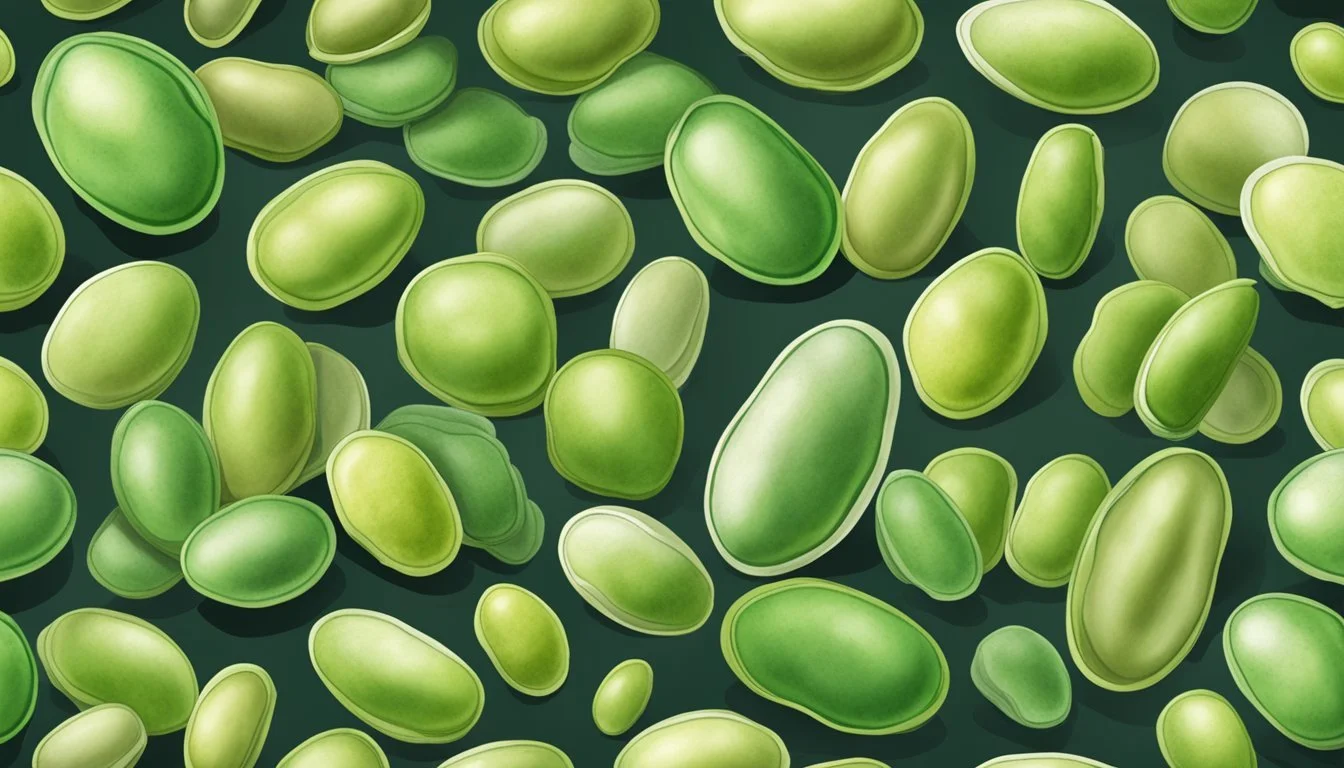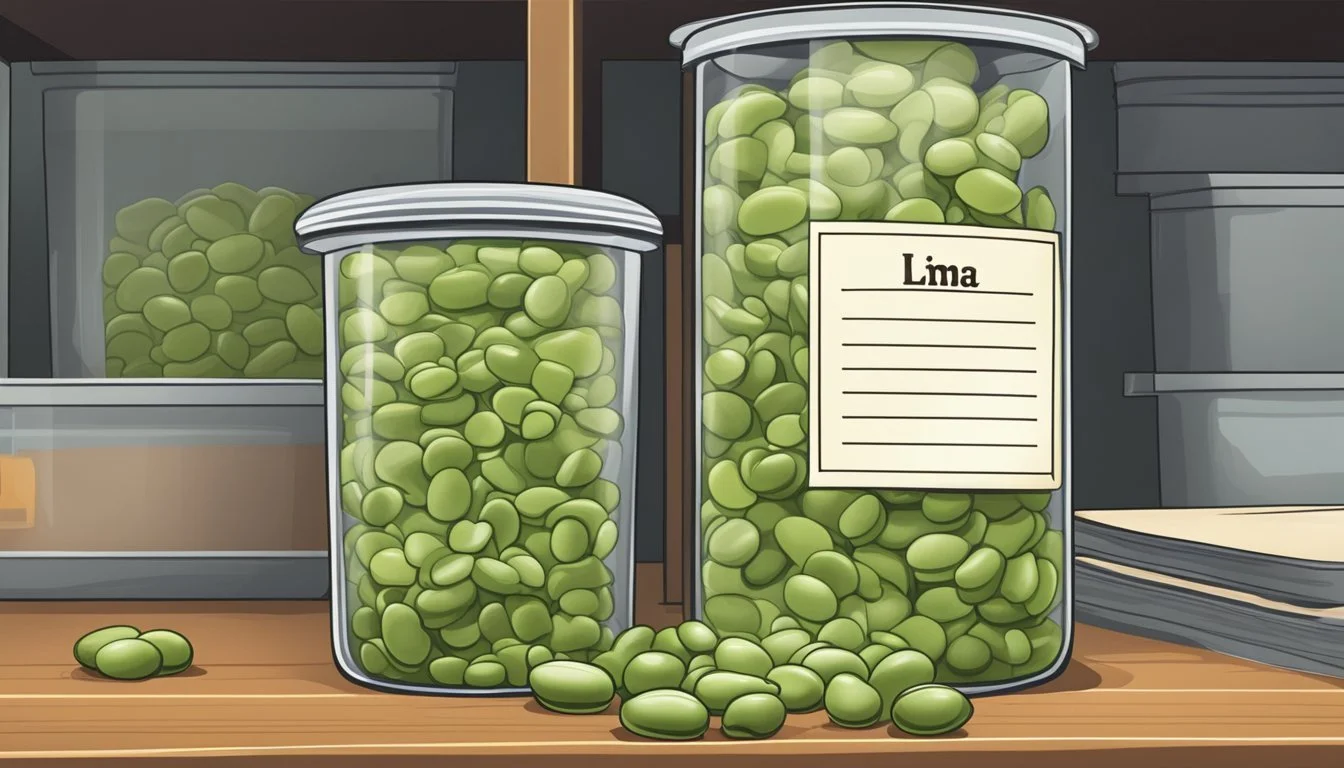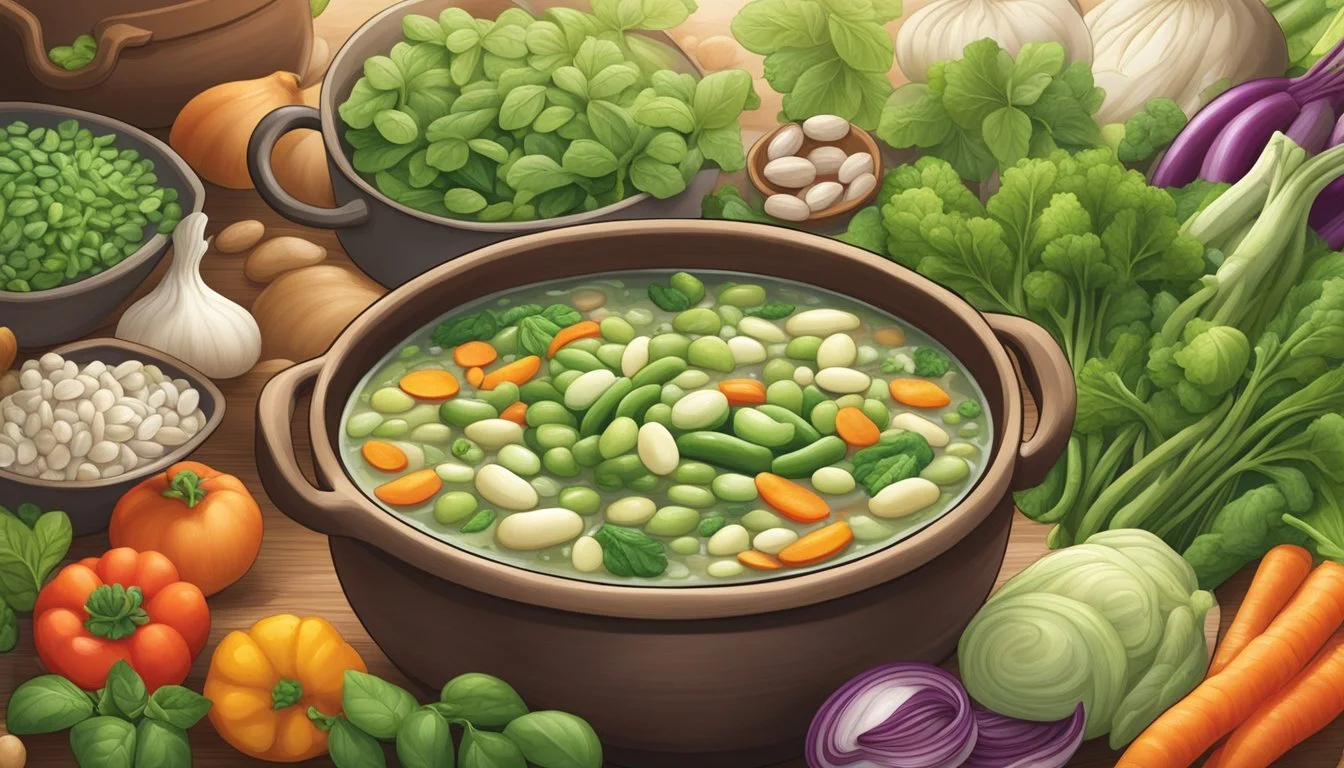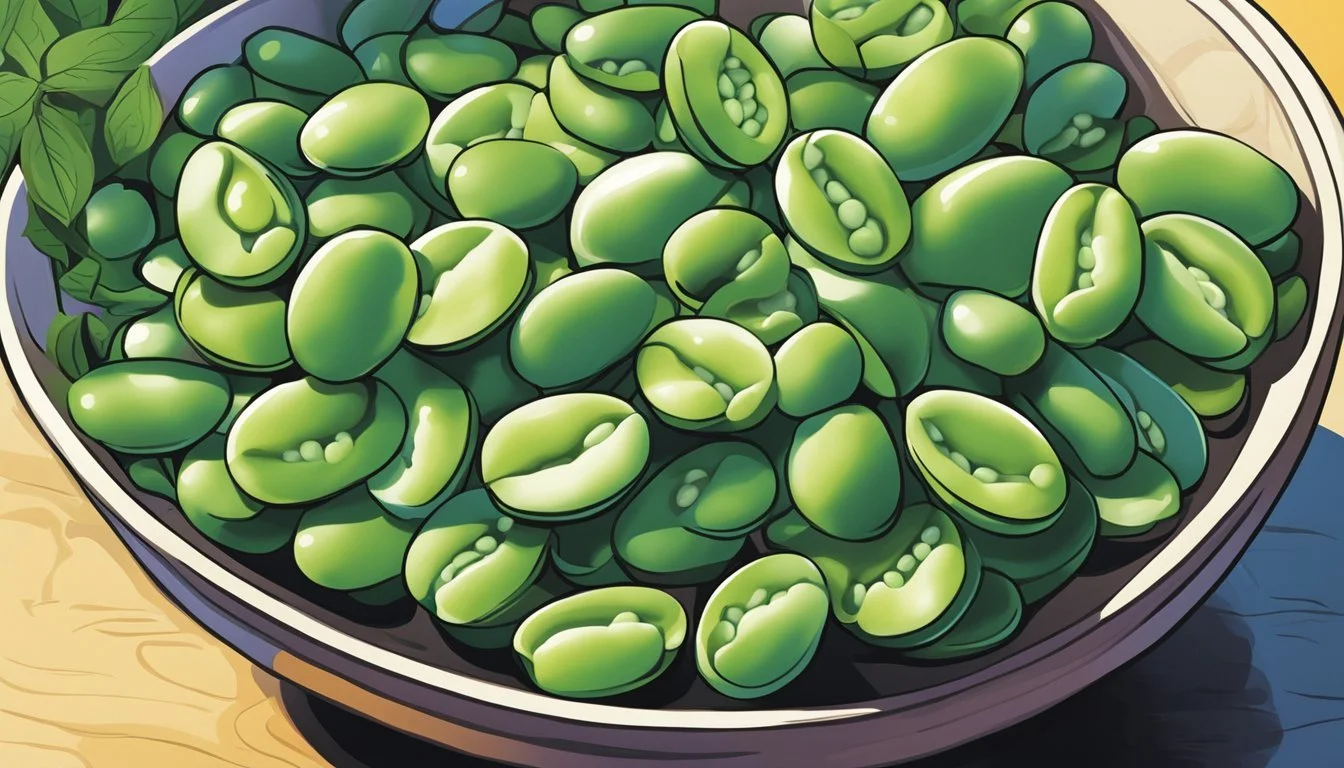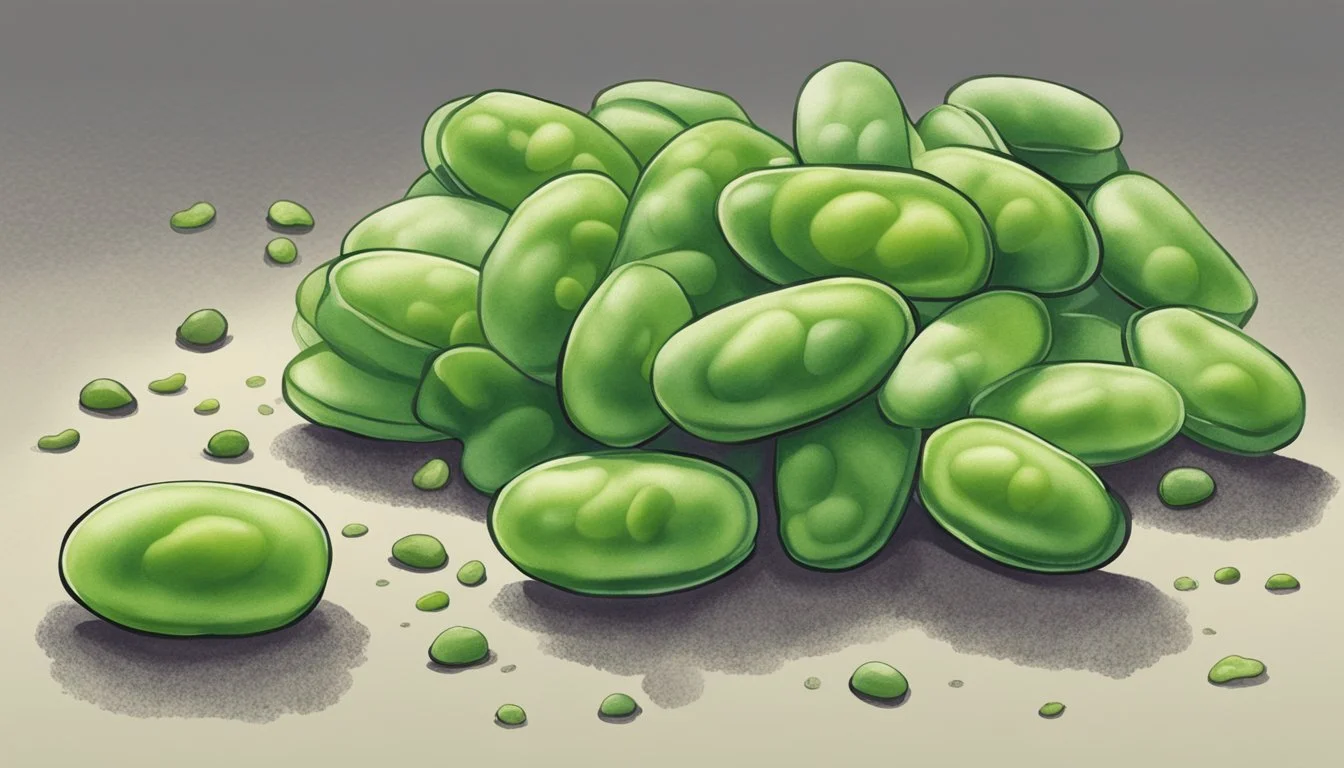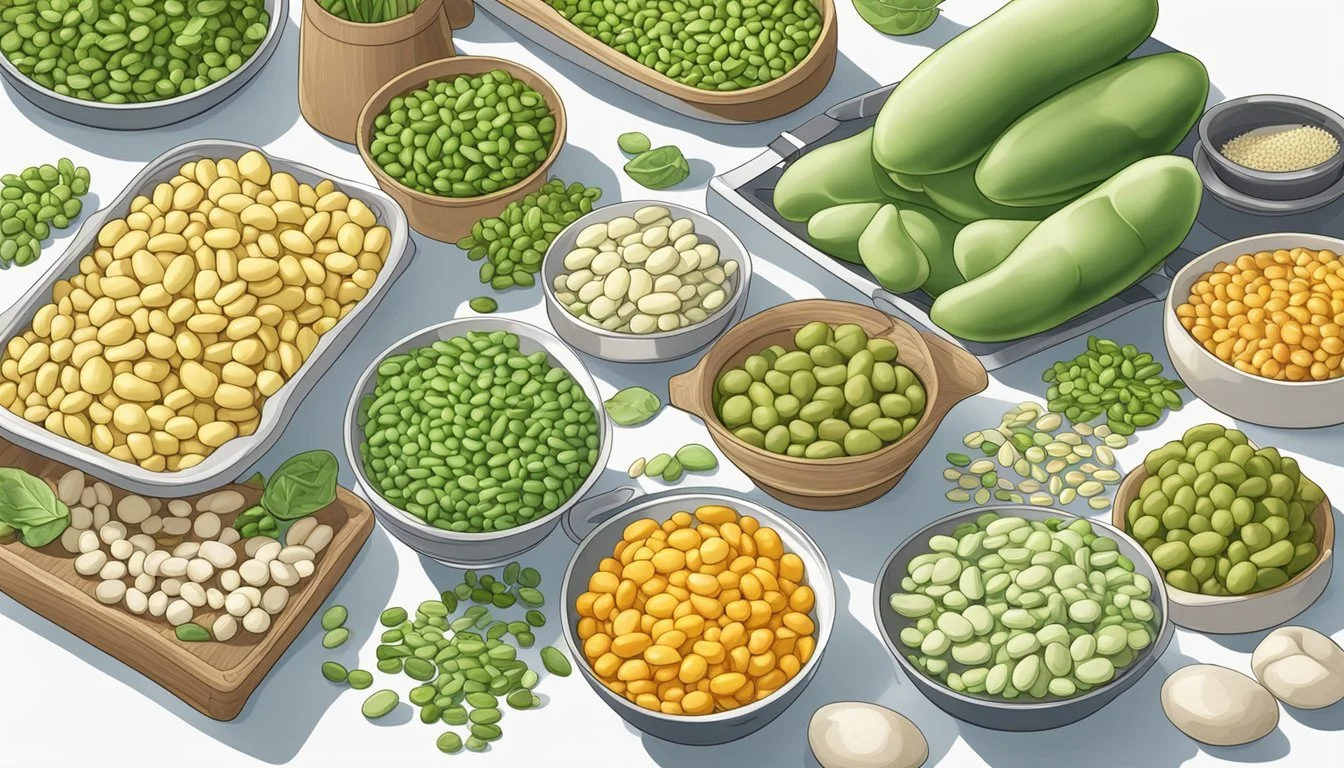Does Lima Beans Go Bad?
Understanding Shelf Life and Storage Tips
Lima beans, like many other dried beans, have a remarkable shelf life when stored properly. If kept in an airtight container in a cool, dry place, dried lima beans can remain edible and nutritious for 1-2 years. Proper storage can even extend their shelf life significantly, making them a reliable pantry staple.
While dried lima beans don’t spoil in the traditional sense, their quality and nutritional value may decrease over time. After two to three years, they start to lose some of their essential nutrients and may require longer cooking times to achieve the desired texture. Refrigerating or freezing dried beans can help maintain their quality for an even longer period.
For those concerned about freshness, it's essential to observe changes in the beans' appearance and cooking performance. Older beans might not cook as evenly and can take longer to soften. Leveraging proper storage techniques ensures that lima beans remain a nutritious and versatile ingredient in your kitchen.
What Are Lima Beans?
Lima beans are a versatile legume known for their mild flavor and rich nutrient profile. They come in various types, each with unique characteristics.
Nutritional Profile of Lima Beans
Lima beans are a powerhouse of nutrients. They are high in protein and fiber, making them an excellent plant-based protein source. These beans are also rich in essential vitamins and minerals such as iron, magnesium, potassium, copper, thiamin, and phosphorus.
The nutritional content of lima beans supports various health benefits. Iron helps in forming red blood cells, magnesium and potassium maintain heart health, while copper and thiamin support metabolic processes. Additionally, lima beans contain antioxidants that help protect cells from damage.
Different Types of Lima Beans
Lima beans come in several varieties, with the most common being baby limas and Fordhook. Baby limas, also known as butter beans, are smaller and have a milder flavor. Fordhooks are larger and have a creamier texture when cooked.
Other less common types include the Christmas lima bean, which has a unique speckled pattern and a nutty taste. Different types of lima beans can be used in a variety of dishes, from soups to salads, each bringing its own texture and flavor profile. Proper storage is key to maintaining their quality and shelf life, whether dried or fresh.
Signs of Deterioration in Lima Beans
It's essential to recognize the signs of deteriorating lima beans to avoid health risks and ensure the best quality. Key indicators include changes in appearance, odor, and texture. Here’s what to look out for:
Visual Indicators of Bad Lima Beans
Color Changes: Healthy lima beans exhibit a vibrant, uniform color. Bad lima beans may show discoloration, turning yellow, brown, or even black.
Mold: Presence of mold is a clear sign the beans have spoiled. Look for fuzzy or powdery patches, usually in white, green, or black. Mold can grow on either dried or canned beans if stored improperly.
Appearance of Bugs: If insects or their eggs are visible, discard the beans immediately. This is mainly a concern for dried beans stored for long periods.
Odor and Texture Changes
Off Odor: Spoiled lima beans develop a strong, unpleasant odor. This is more prominent in canned beans. If the beans emit an off or sour smell, they are unsafe to eat.
Texture: Dried lima beans should be hard and smooth. If they become soft, wrinkled, or sticky, it indicates spoilage. Canned beans should be firm, not mushy. Excessive mushiness suggests they have gone bad.
Sliminess: For beans stored in liquid, a slippery or slimy texture is another sign of spoilage. This could be due to bacterial activity, posing health risks.
Health Risks of Consuming Spoiled Beans
Bacteria and Mold: Consuming spoiled beans can lead to foodborne illnesses due to bacteria like Salmonella or E. coli and mold that produces mycotoxins. Symptoms include nausea, vomiting, diarrhea, and abdominal pain.
Linamarin and Cyanide: Raw or improperly cooked lima beans contain linamarin, which converts to toxic cyanide. Spoiled beans, if not cooked thoroughly, may retain these compounds, posing severe health risks.
Inflammation and Gut Health Issues: Spoiled beans may aggravate gut health, causing inflammation and digestive discomfort. Off odors and textural changes are early signs to avoid these risks.
To avoid these issues, store lima beans properly, check expiration dates, and always inspect beans before cooking.
How to Store Lima Beans
Proper storage of lima beans ensures their longevity and maintains their flavor. Depending on whether they are dry, cooked, or fresh, there are specific methods to store them effectively.
Storing Dry Lima Beans
Dry lima beans have the longest shelf life. They should be kept in a cool, dry place like a pantry or cupboard away from direct sunlight and heat sources. Ensure the beans are placed in airtight containers to protect them from moisture and oxygen exposure, which can lead to spoilage.
Glass jars with tight-fitting lids, or sealed plastic bags, are ideal. The U.S. Department of Agriculture suggests storing them at room temperature and away from appliances that generate heat. Properly stored dry lima beans can last up to a year or more.
Preserving Cooked Lima Beans
Cooked lima beans require refrigeration to remain safe to eat. After cooking, allow the beans to cool before transferring them into airtight containers. Label these containers with the date before placing them in the refrigerator.
Cooked lima beans should be kept at a temperature between 32-40°F (0-4°C). They can be stored in the refrigerator for up to 5 days. If longer storage is needed, freezing is a better option, ensuring the cooked beans retain their quality over extended periods.
Freezing Lima Beans
Freezing is an effective method for long-term storage of both fresh and cooked lima beans. For fresh lima beans, blanch them in boiling water for 2-3 minutes before rapidly cooling them in ice water. This process stops enzymatic processes that degrade quality.
Once blanched, drain and dry the beans, then place them in airtight freezer bags or containers. Remove as much air as possible to prevent freezer burn. For cooked beans, simply transfer cooled beans into airtight containers or freezer bags.
Label with the freezing date and store in the freezer. Frozen lima beans can be kept for up to 6-12 months. Proper airtight packaging is key to preventing moisture and oxygen from affecting the beans' texture and flavor.
These storage practices ensure your lima beans remain fresh and flavorful, whether they are dry, cooked, or frozen.
Optimizing Lima Beans Shelf Life
Lima beans can last longer and retain their quality when stored properly. Understanding the factors that affect their shelf life and implementing proper storage methods is essential.
Factors Affecting Shelf Life
Several elements play a role in how long lima beans remain fresh. Storage conditions are critical. Lima beans should be kept in a cool, dry place. Air and light exposure can degrade their quality. Humidity and temperature fluctuations can cause moisture build-up, leading to mold and spoilage.
Dried lima beans usually have a longer shelf life than canned ones. Dried beans stored in airtight containers can retain quality for 1-2 years, but they must be protected from moisture. Canned beans, due to preservatives and salt, typically last until the printed expiry date, provided they are unopened and stored in a cool pantry.
Maximizing Freshness and Prolonging Quality
To ensure the longevity of lima beans, specific storage techniques should be applied. Store dried lima beans in airtight containers in a pantry that is dark and cool. This prevents air and light from affecting the beans. For longer storage, consider placing dried beans in the refrigerator or freezer.
Once canned beans are opened, transfer them from the can to a sealed container and refrigerate. Use within 3-4 days. Cooked lima beans should be stored in the fridge and consumed within 3-5 days.
Consistently check beans for signs of spoilage such as unusual odors or mold before use. Proper storage practices will maintain the best quality and extend the shelf life of lima beans.
Preparing Lima Beans for Cooking
Preparing lima beans involves essential steps to ensure they are clean, properly soaked, and cooked to the perfect texture. Each step contributes to the beans' flavor and overall success in various dishes.
Cleaning and Sorting
Before cooking lima beans, it is crucial to clean and sort them. Start by picking through the beans, discarding any debris, such as small stones or damaged beans.
Place the beans in a colander and rinse them thoroughly under cold running water to remove dust and dirt. This process ensures that you only cook healthy and high-quality beans, enhancing the flavors of your recipes.
Soaking and Boiling Procedures
Soaking lima beans helps shorten their cooking time and improve their texture. For an overnight soak, place the beans in a large bowl and cover them with at least three inches of water. Leave them to soak for 8-12 hours.
If you prefer a quicker method, use the quick soak technique. Boil the beans for 2 minutes, then let them sit for an hour before draining. Always discard the soaking water and use fresh water or broth for cooking to reduce gas-inducing compounds.
Cooking Times for Perfect Texture
Once soaked, cooking lima beans to the right texture is essential. Using a stovetop, add the soaked beans to a large pot and cover with water or broth. Bring to a boil, then reduce to a simmer, cooking for 45 minutes to an hour until tender.
For pressure cooking, the beans take only 15-20 minutes. If using a slow cooker, cook on low for 6-8 hours or on high for 3-4 hours. Adjust cooking times based on the desired softness, as well-cooked beans are crucial for any dish.
Incorporating Lima Beans into Recipes
Lima beans, known for their high fiber and nutritional content, can enhance a wide range of dishes and add a unique flavor and texture. From traditional soups to innovative dips, these legumes are versatile and nutritious.
Classic Lima Beans Dishes
Lima beans feature prominently in many traditional recipes. Fassolada, a Greek dish, combines lima beans with tomatoes and herbs to create a hearty soup. This dish highlights the beans' ability to absorb flavors and provide a rich texture.
Another classic preparation is double bean salad, where cooked lima beans are mixed with green beans, tomatoes, and a light vinaigrette. This salad leverages the nutritional benefits and robust flavors of lima beans, creating a fresh and tasty dish.
For a simple, comforting meal, lima beans in a crockpot with ham hocks, water, and a pinch of salt and sugar form a traditional Southern staple. This slow-cooked dish allows the beans to tenderize and soak in the meat’s flavors, resulting in a savory and nutritious meal.
Creative Uses for Lima Beans
Beyond traditional recipes, lima beans can be creatively incorporated into various dishes. A creamy lima bean mash can be prepared by puréeing cooked beans with half-and-half and butter. This side dish pairs well with roasted meats or can be spread on toast.
Lima beans can also be used in a bean dip. Blending beans with olive oil, garlic, and herbs creates a smooth and flavorful dip, perfect for vegetables or bread.
For a refreshing beverage, try a mint and rosemary lemonade with vanilla. This drink offers a surprising combination that complements the subtle flavors of lima beans in any meal, making it a delightful and unexpected pairing.
Incorporating lima beans into these dishes not only enhances flavor but also boosts the nutritional value, providing a delicious and healthy addition to any meal.
Health Benefits of Lima Beans
Lima beans, also known as butter beans, offer numerous health benefits, particularly for heart health, digestive wellness, and blood sugar management. Here’s a closer look at how these plant-based powerhouses can support overall health.
Contribution to Heart Health
Lima beans are rich in nutrients that are specifically beneficial for heart health. The fiber in lima beans can help lower cholesterol levels, reducing the risk of heart disease.
Polyphenols, a type of antioxidant found in lima beans, may improve cardiovascular function by protecting blood vessels. Additionally, these beans contain potassium, which helps regulate blood pressure.
Plant-based protein in lima beans also plays a role in maintaining healthy cholesterol levels. By incorporating lima beans into a diet, one can enjoy both their heart-protective qualities and their great taste.
Lima Beans for Digestive Wellness
Lima beans offer significant benefits for digestive health due to their high fiber content. Soluble fiber from lima beans can promote healthy bacterial growth in the gut, enhancing gut health and function.
This fiber helps in stabilizing blood sugar and provides sustained energy by slowing glucose absorption. Fiber also promotes satiety, which can be beneficial for weight management.
These beans contain a range of essential nutrients, supporting the overall health of the digestive system. Including lima beans in daily meals can thus aid in maintaining a well-functioning digestive tract.
Impacts on Blood Sugar and Inflammation
Consuming lima beans can positively impact blood sugar levels. The complex carbohydrates in these beans result in a gradual increase in blood sugar, which helps manage insulin levels effectively.
Lima beans also have anti-inflammatory properties. Magnesium and other minerals in them contribute to reducing inflammation, which is crucial for preventing various chronic conditions.
Reduced inflammation can lead to better management of diseases such as diabetes and arthritis. Regular consumption of lima beans can support a balanced approach to inflammation and blood sugar control.
These beneficial impacts make lima beans an excellent addition to a health-conscious diet.
Potential Downsides and Allergies
Lima beans offer many nutritional benefits but can present certain challenges, such as the presence of antinutrients and potential allergic reactions. Thorough preparation and awareness are key in managing these issues.
Managing Antinutrients in Lima Beans
Lima beans contain antinutrients like phytic acid and linamarin. Phytic acid can interfere with the absorption of minerals like iron and zinc. Linamarin, when raw, can release hydrogen cyanide, a toxic compound.
To reduce antinutrients:
Soak the beans in water for at least 12 hours.
Cook thoroughly, boiling for at least 10 minutes.
Rinse beans before and after soaking.
These methods help lower antinutrient levels and make lima beans safer for consumption.
Recognizing and Addressing Lima Beans Allergies
Legume allergies, though less common, include reactions to lima beans, lentils, chickpeas, and peas. Symptoms may range from mild to severe and include itching, gastrointestinal issues, and anaphylaxis.
For those with known legume allergies:
Avoid lima beans and related legumes.
Consult with an allergist for testing and management.
Read food labels carefully to avoid exposure.
Seeking medical advice is essential for managing allergies effectively and preventing adverse reactions.
Expert Tips for Selecting and Purchasing Lima Beans
Selecting high-quality lima beans ensures better flavor and nutritional value. Focus on color, texture, and packaging when purchasing these legumes.
Identifying High-Quality Dry Beans
When selecting dried lima beans, look for uniform color and size. The beans should be bright green without discoloration or dark spots. Inspect for evidence of mold or insect damage, as these indicate poor quality.
Good quality beans are firm to the touch and have a smooth surface. Avoid any that are wrinkled or broken, as these may affect cooking results and nutritional content. Check the expiration date on the packaging to ensure freshness and optimal shelf life.
Choosing the Best Packaged Lima Beans
When buying packaged lima beans, whether dried or canned, prioritize packaging that is intact and free from damage. For dried beans, choose vacuum-sealed or airtight bags that protect the beans from moisture and pests.
For canned lima beans, look for cans without dents, rust, or swelling. The U.S. Department of Agriculture recommends checking labels for added sodium or preservatives which can affect the beans' nutritional quality. Always store lima beans in a cool, dry pantry to maintain their shelf life and protein content.


